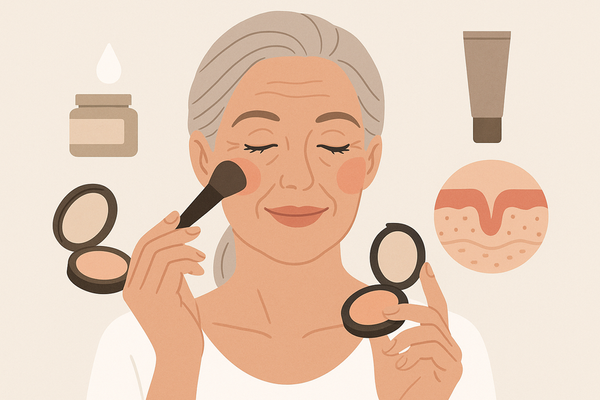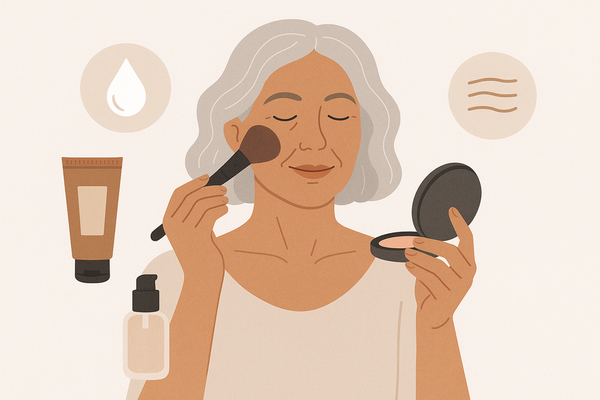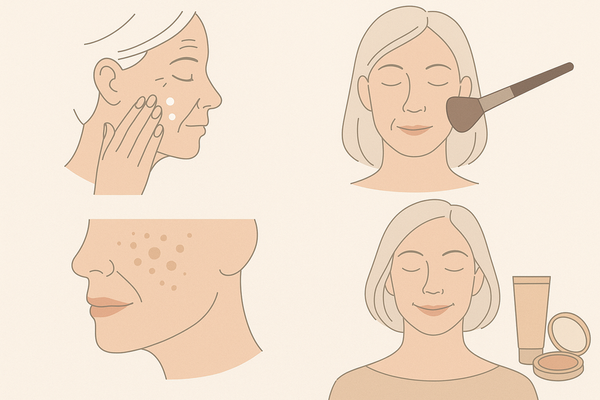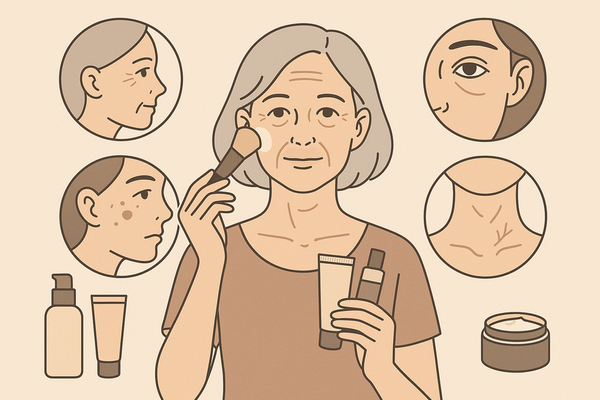The Best Makeup Primers for a Flawless, Long-Lasting Base
Discover the best makeup primers to achieve a flawless, long-lasting base with SPF under makeup, pore-filling primer tips, and color correction.
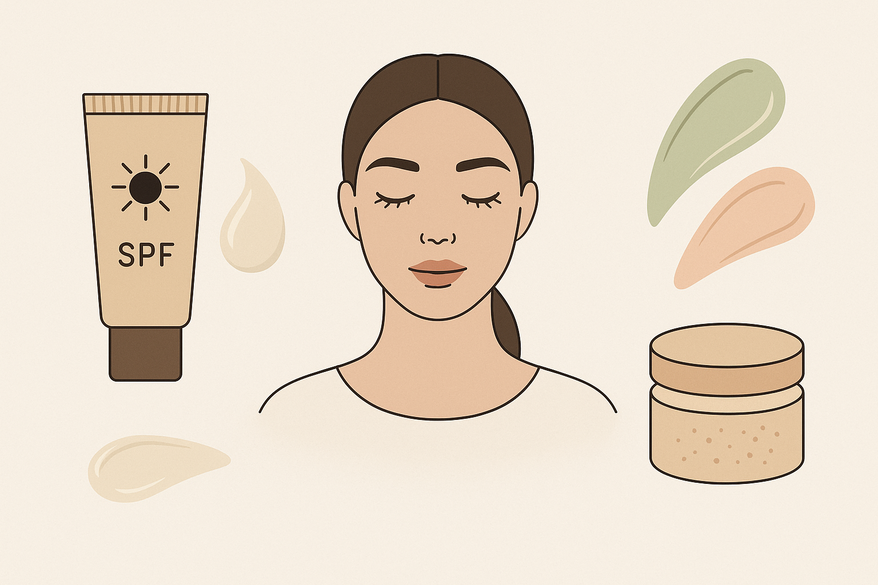
Estimated reading time: 8 minutes
Key Takeaways
- Primers create a smooth, long-lasting canvas for foundation.
- SPF-infused formulas combine makeup prep with sun protection.
- Pore-filling and color-correcting primers address texture and tone concerns.
- Choosing the right primer depends on your skin type and primary concern.
- Patch-testing and proper application techniques prevent pilling and irritation.
Table of Contents
- Introduction to Best Makeup Primers
- Primer vs Moisturizer
- Incorporating SPF Under Makeup
- Pore-Filling Primer Tips
- Color-Correcting Primers
- Buying Guide & Checklist
- Common Pitfalls & How to Avoid Them
- Personalized Feedback with AI
- Conclusion & Next Steps
Introduction to Best Makeup Primers
Makeup primer is the essential first layer that preps skin for foundation by smoothing texture, minimizing pores, and extending wear time. When you shop for the best makeup primers, you’re investing in a product that helps every other step of your routine perform at its peak. As Glo Skin Beauty shows, primers form the essential first layer in your makeup routine, ensuring even application and long-lasting results.
Today’s top primers are multi-functional. Many modern formulas offer hydration, oil control, pore refinement, and even integrated sun protection through SPF. That means one product can deliver a smooth base and everyday defense against harmful UV rays.
For a deeper dive on prepping your skin before makeup, check out our ultimate pre-makeup skincare routine.
Why You Need the Best Makeup Primers
- Smoothing: Fills fine lines and blurs imperfections for a soft-focus finish.
- Pore Minimizing: Visibly shrinks enlarged pores in seconds.
- Long Wear: Creates a “grip” layer so foundation won’t slide off.
- SPF Under Makeup: Offers built-in sun protection to prevent premature aging.
Including a primer with SPF under makeup saves time and ensures you never skip sun care. Let’s dive into how primers differ from moisturizers, why SPF primers matter, and how to pick the perfect formula for your skin.
Primer vs Moisturizer
What is a Primer?
A primer is the bridge between skincare and makeup. It creates a grippable, even surface so products apply more smoothly and last longer. Learn more at Beautyblender’s guide.
What is a Moisturizer?
A moisturizer is a skincare staple designed to hydrate and nourish the skin barrier. It locks in moisture and supports overall skin health but doesn’t improve makeup longevity. (Source: RMS Beauty)
Key Functionality Comparison:
- Primer: Blurs imperfections, controls oil, extends wear up to 12+ hours, and may tint or color-correct.
- Moisturizer: Hydrates, repairs barrier, prevents dehydration; does not fill pores or create makeup “grip.”
Real-World Scenario Examples:
- Humid Climates: Primer’s mattifying action prevents foundation from melting off.
- Long Workdays: A primer locks in color, so you look fresh at 6 PM.
- Photo Shoots/Events: Primers create a flawless canvas that lasts under hot lights.
“Primers outperform moisturizers as a base layer when you want enhanced makeup durability, smoother application, oil control, or targeted skin improvements like pore blurring…”
Incorporating SPF Under Makeup
Why SPF Matters
Daily sun protection prevents premature aging, sunburn, and hyperpigmentation. Without SPF, UV rays break down collagen, leading to fine lines and dark spots.
What Is an SPF-Infused Primer?
An SPF-infused primer is a dual-purpose formula that preps skin and delivers sun protection in one step. It streamlines your routine and ensures you never forget sunscreen.
How to Choose an SPF Primer:
- SPF Rating ≥ 30: Blocks up to 97% of UVB rays.
- Broad-Spectrum Coverage: Shields against UVA (aging rays) and UVB (burning rays).
- Texture Match:
- Dry Skin: Hydrating SPF primers with glycerin or hyaluronic acid.
- Oily Skin: Mattifying SPF primers with oil-absorbing powders.
- Combination Skin: Lightweight, balanced formulations.
Actionable Tip: Layer a dedicated SPF under makeup only if your primer’s SPF is <30. Otherwise, stick to one SPF-infused primer for both priming and protection.
Pore-Filling Primer Tips
What Are Pore-Filling Primers?
Pore-filling primers use silicones (e.g., dimethicone) to fill uneven texture and fine lines, creating a soft-focus effect.
Application Tips:
- Target Zones: Focus on the T-zone, cheeks, and any areas with visible pores.
- Press, Don’t Rub: Use fingertips or a damp sponge to press primer into skin for even fill.
- Let It Set: Wait 30–60 seconds for the formula to dry down before foundation.
Formulas for Every Skin Type:
- Oily/Combination Skin: Lightweight, non-comedogenic silicones that won’t clog pores.
- Dry Skin: Silicone-blend primers with hydration boosters like glycerin or hyaluronic acid.
- Sensitive Skin: Fragrance-free, hypoallergenic primers without harsh silicones.
Expert Insight: Pressing primer into skin helps settle particles into uneven texture, reducing pilling and ensuring a smoother foundation application.
Color-Correcting Primers
What Are Color-Correcting Primers?
Color-correcting primers are tinted bases that neutralize specific discoloration using color theory. They work under foundation to even out tone and reduce the need for heavy concealer.
Shade Guide:
- Green Primer: Cancels redness from blemishes and rosacea.
- Purple/Lavender Primer: Brightens dull, yellow undertones for a radiant glow.
- Peach/Orange Primer: Neutralizes dark circles on medium to deep skin tones.
Usage Instructions:
- After moisturizer, before foundation: lay down a thin layer on targeted areas.
- Blend well: use fingertips or a sponge in gentle patting motions.
- Layer lightly: apply foundation on top; skip heavy concealer in treated areas.
Benefit Snapshot: Creates an even canvas, reduces heavy concealer use, and enhances long-wear performance.
Buying Guide & Checklist
- Step 1: Identify Your Primary Skin Concern
- Hydration
- Oil Control
- Pore Refinement
- Discoloration
- Sun Protection
- Step 2: Select Your Formula Type
- Hydrating Primers for Dry Skin
- Mattifying Primers for Oily Skin
- Pore-Filling Primers for Texture Smoothing
- Color-Correcting Primers for Tone Correction
- SPF-Infused Primers for Daily Protection
- Step 3: Check Key Ingredients
- Hyaluronic Acid: Attracts and retains moisture.
- Niacinamide: Regulates oil and refines pores.
- Silicones (Dimethicone): Smooths fine lines and fills pores.
- Step 4: Confirm SPF and Broad-Spectrum Status
- SPF 30+ for daily wear.
- UVB and UVA coverage.
- Step 5: Patch-Test New Primers
- Apply a small dot on inner forearm.
- Wait 24–48 hours to check for irritation.
Common Pitfalls & How to Avoid Them
- Confusing Primer with Moisturizer: Primer ≠ hydration alone; it’s designed for makeup adhesion and performance.
- Over-Application Causing Pilling: Use a pea-sized amount and let the primer set fully before foundation.
- Skipping SPF Protection: If your primer lacks SPF, always apply an SPF 30+ product first.
- Ignoring Skin Type Match: A mattifying primer can over-dry if you have parched skin.
- Neglecting Patch Tests: Avoid allergic reactions by testing new formulas on a small skin patch.
Personalized Feedback with AI
For an objective look at how well your primer and foundation are performing, try Makeup Check AI for quick analysis and tailored suggestions in seconds.

Conclusion & Next Steps
Choosing from the best makeup primers means finding a formula that preps, protects, and perfects. Whether you need smoothing, SPF under makeup, pore-filling primer tips, or color correction, there’s a primer that’s right for you. Match your primer to your skin type and concerns—dryness, oiliness, enlarged pores, redness, or sun sensitivity—to unlock a flawless, long-lasting makeup base.
Troubleshooting a cakey foundation? Our cakey foundation fix guide has you covered.
Now it’s your turn: Share your favorite primers or ask questions in the comments below. Experiment with different types and discover your personal “best makeup primer” for every day and every occasion.
FAQ
- What does a makeup primer do?
Primer smooths texture, fills fine lines, and extends the wear of your foundation. - Can I use a moisturizer instead of primer?
Moisturizer hydrates but doesn’t create a grip layer or blur pores like a primer does. - How long before foundation should I apply primer?
Apply primer and wait 30–60 seconds for it to set before layering foundation. - Do I still need sunscreen if my primer has SPF?
If the primer’s SPF is 30 or higher and broad-spectrum, you can skip an additional layer, but patch-test first.

